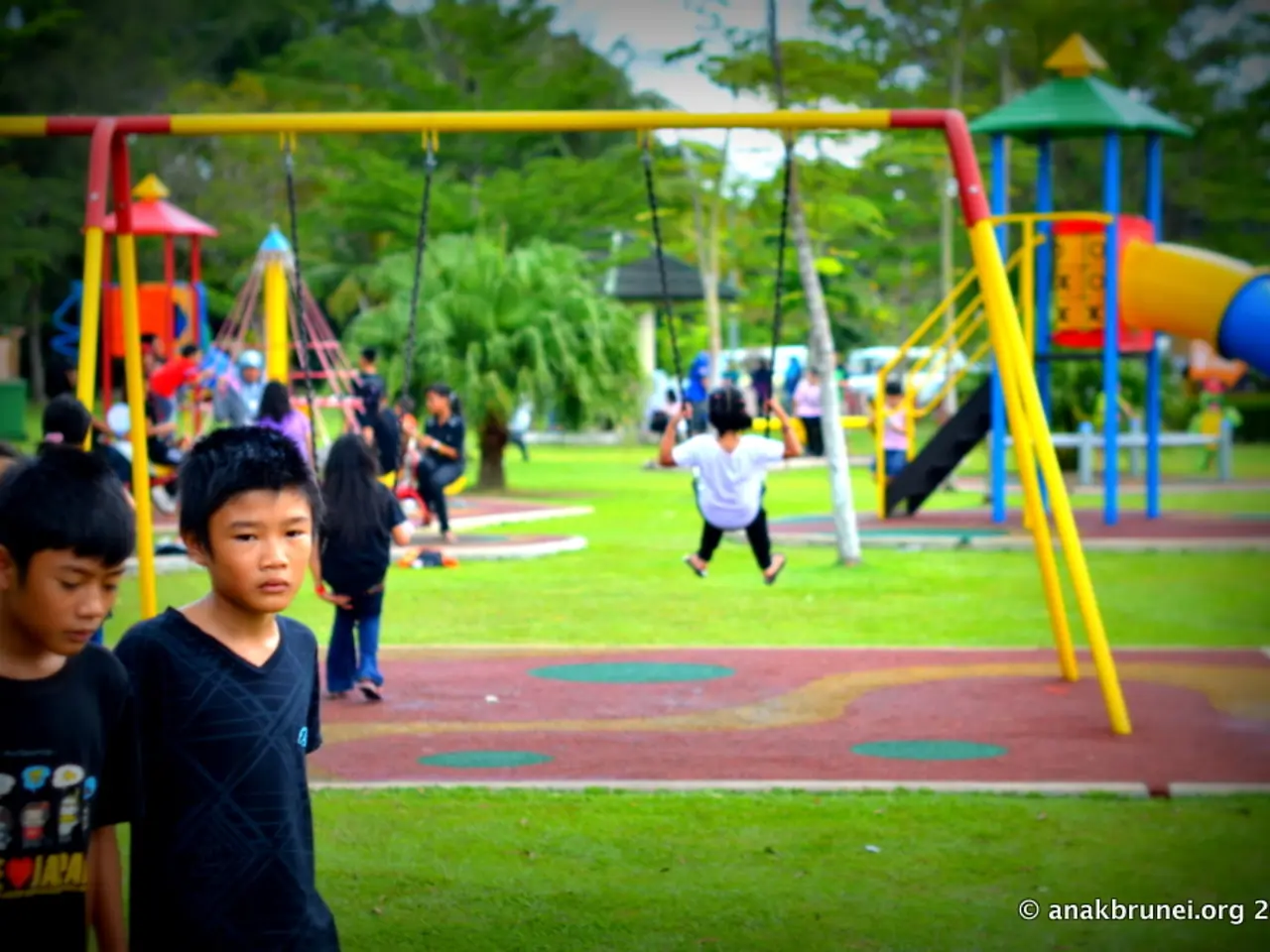Outdoor Expedition for Children: The Comprehensive Guide to Nature Exploration
Nature scavenger hunts are a fun and educational outdoor activity for children of all ages. These hunts, which last anywhere from 15 minutes for toddlers to up to an hour for school-age children, offer a structured way for kids to connect with the natural world and practice mindfulness.
For Young Children (ages 3-5)
For young children, the focus is on simple, familiar items that focus on basic colors, shapes, or easily recognizable natural objects. Examples include a green leaf, a round rock, or a flower. To support early readers, include lots of pictures or illustrations on the list. Keep the list short and concrete to maintain engagement.
For Early Elementary Children (ages 6-8)
For early elementary children, introduce more variety and slightly more challenging items, such as finding specific types of leaves, insects, or bird songs. Include observational tasks like “find a rock bigger than your hand” or “spot a bird’s nest.” You can add simple descriptive clues to encourage thinking and exploration.
For Older Children (ages 9-12)
For older children, incorporate precise or less common natural items, such as a particular type of acorn, identifying local wildflowers, or measuring a tree’s height relative to a reference. Add some educational elements, like noting patterns or behaviors. Including open-ended tasks promotes critical thinking and deeper engagement.
Tips for Successful Nature Scavenger Hunts
- Make scavenger hunts sensory-focused to engage touch, smell, and sound.
- Use printable worksheets or checklists for older children, but rely more on images and parent-guided interaction with younger kids.
- Adapt the scavenger hunt environment to the children’s physical abilities and attention span, starting in safe, familiar areas like backyards or local parks.
- Incorporate themes or tie-ins to books or seasonal changes to enhance interest and learning.
- Nature scavenger hunts can be adapted for children with special needs by modifying them based on individual abilities and interests.
Safety Considerations
- A basic first aid kit should be brought along.
- Children should be taught to identify harmful plants (poison ivy, oak, sumac).
- Participants should apply sunscreen and insect repellent before starting the scavenger hunt.
- In case of bad weather, have an indoor nature hunt alternative ready.
- Supervision is necessary near water during the scavenger hunt.
- Participants should check for ticks after woodland hunts.
After the Scavenger Hunt
Nature journal, natural art collage, and nature memory game can be DIY craft projects after the scavenger hunt. These activities allow children to further engage with the natural world and extend the learning experience.
Benefits of Nature Scavenger Hunts
Nature scavenger hunts foster a sense of wonder and curiosity about the environment. They also promote physical exercise, critical thinking, and development of observation skills. Spending time in nature during these hunts reduces stress and anxiety in children. Moreover, nature scavenger hunts help children learn to identify different species, understand ecological relationships, and observe seasonal changes.
Making it Competitive
The scavenger hunt can be turned into a friendly competition with small prizes to add an element of fun. Alternatively, you can structure the hunt as a photo hunt, scientific investigation, or geocaching adventure for older kids and tweens.
Getting Started
Nature scavenger hunts can be adapted for any outdoor setting, season, or age group. Ready-to-use printable lists for different environments are available to help you get started right away. Establish a meeting point if groups separate during the hunt to ensure everyone's safety.
In conclusion, nature scavenger hunts are powerful educational tools that extend learning beyond the classroom. By aligning the list items and tasks with children's cognitive, sensory, and physical abilities, you create an engaging, educational, and fun nature scavenger hunt suitable for any age group.






